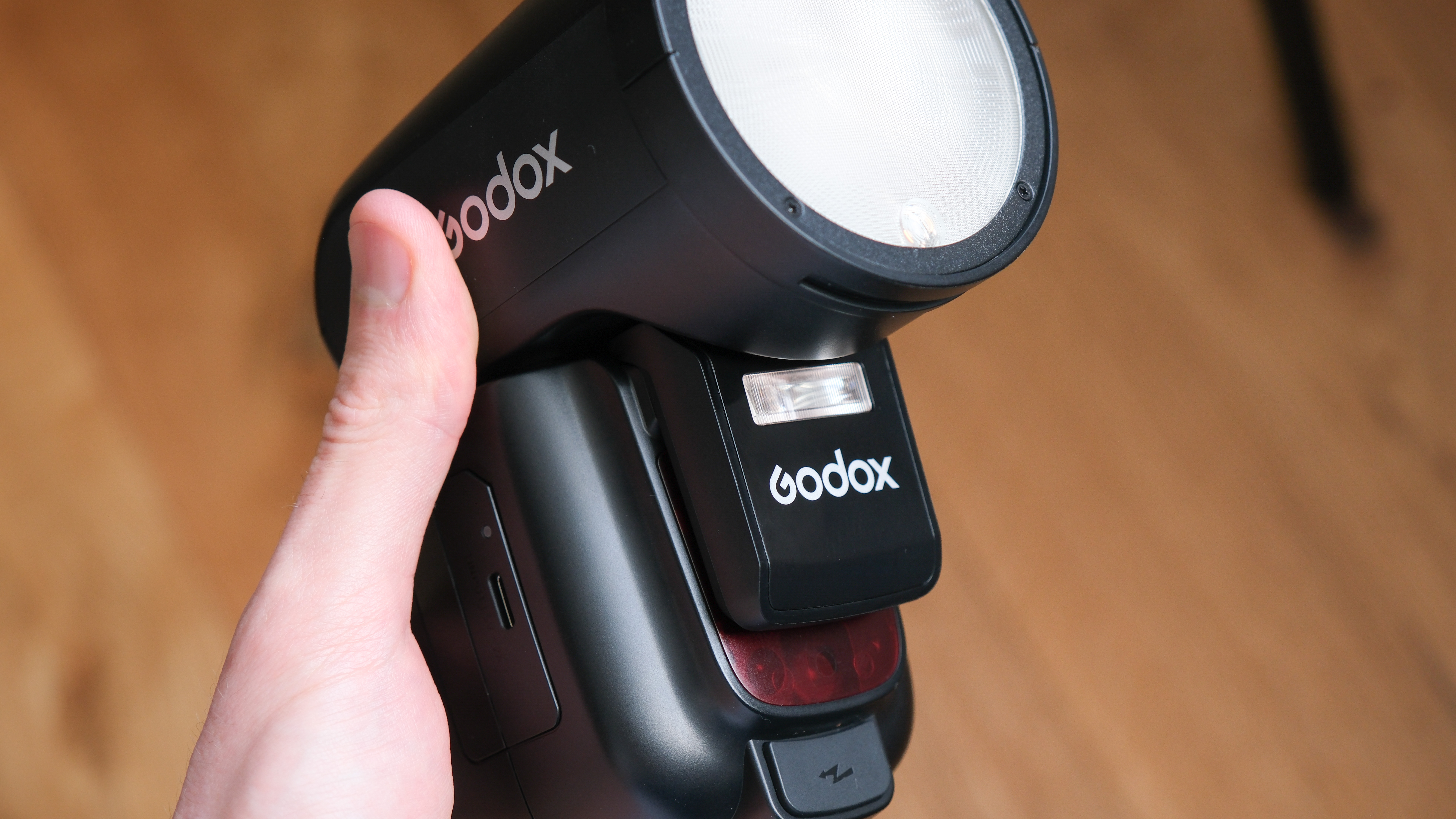
Flash photography is a really underappreciated thing. Its difficulty to master means a lot of photographers steer well clear of trying it, as it is so easy to stray into poorly done flash photography that looks outdated and cheap. But a good flash with good technique can make all the difference in turning a drab mundane picture into a professional-looking one. The easiest place to start – a great on-camera flash.
While many people think of on-camera flashes as the built-in pop-up flashes on cameras that make everyone ghostly pale with red eyes, but a serious on-camera flash is a whole different ball game and is the savior of wedding, portrait, and event photographers who need to be ready to shoot anywhere.
Most camera manufacturers have several great flash options, but it's Godox that has risen through the ranks with one of the best flashguns that balances performance with exceptional value with its Godox V1. Now Godox is introducing a newer and more powerful version that takes the best from the standard model, but now with blistering recharge speeds for the most demanding of pros, as well as an intriguing new clip-on fill flash. But when the original is so good, does this Pro version offer enough to tempt an upgrade?
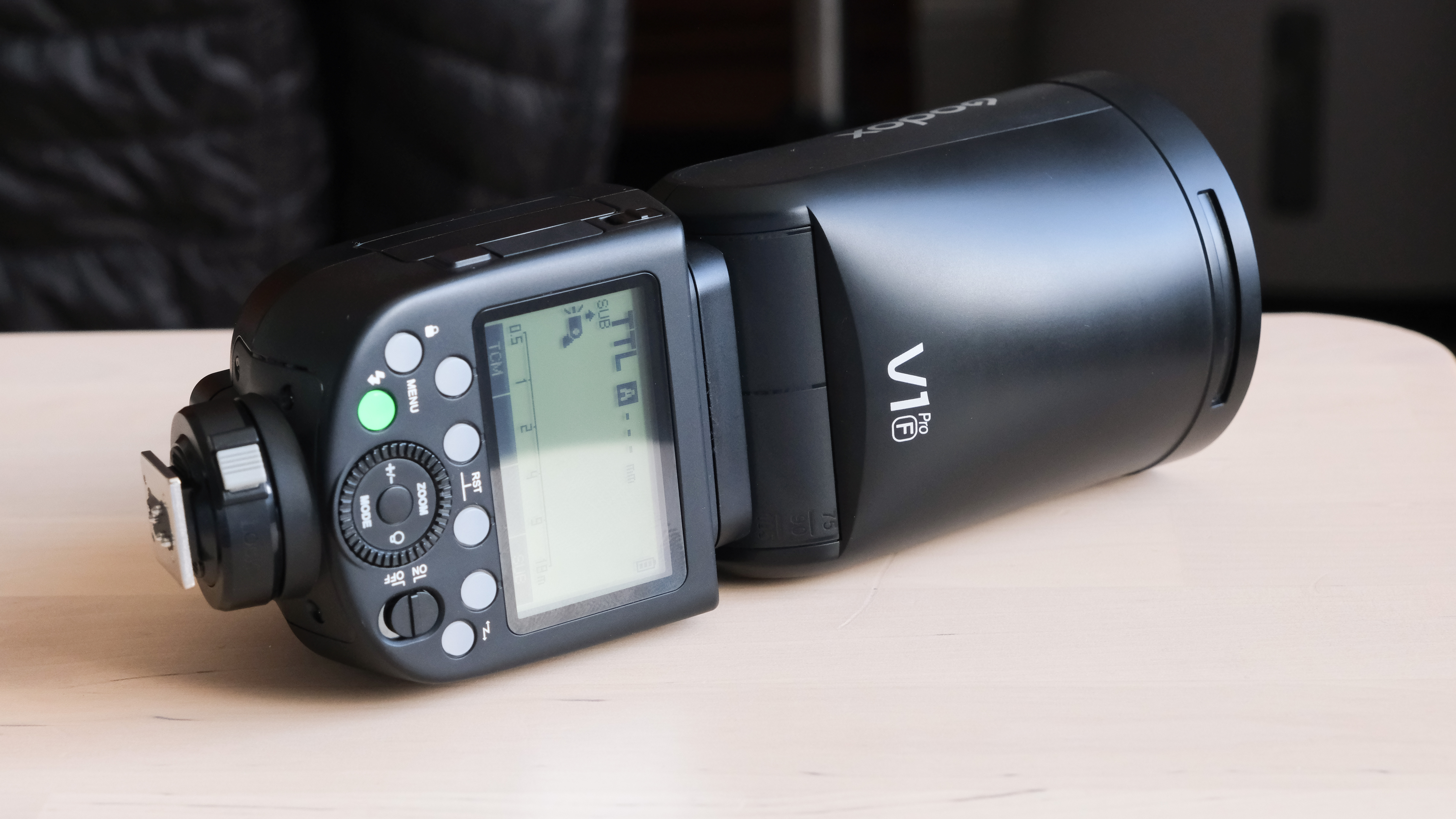
Godox V1Pro: Specifications
Godox V1Pro: Price
The Godox V1Pro launched at $329. When compared to the Profoto’s very premium (and overpriced) lights like the A10, the Godox V1 Pro is an absolute bargain at around a fifth of the price, and up against camera brands' own flashguns, it still undercuts the competition with a Canon EL-5 as one example costing around $500.
The Godox V1Pro obviously comes in more expensive than the standard Godox V1, currently at around a $100 premium, although as ever with Godox products you can find wildly different prices for different combinations of accessories and bundles depending on where you shop.
For around $100, which includes the clip-on flash unit, this isn’t a bad deal when you take into account the other improvements to the rechange speed as well as the improved ease of charging the battery. The only question to ask yourself is if you really need the additional benefits of the Pro, as the standard V1 has the same power, and isn’t exactly slow. For me, the standard model does the job well enough, and I can keep some of my cash.
Godox V1Pro: Design & Handling
At a glance, you probably wouldn’t be able to tell the difference between the V1Pro and the V1, with the newer model keeping the same form as the standard model, although when there was nothing fundamentally wrong with the V1 and you have already established a control scheme Godox users are familiar, then why change things. The control layout is the same, the battery is interchangeable with other models, and the V1Pro keeps one of the best features of the V1, with magnetic attachments that effortlessly clip to the front.
The V1Pro is an on-camera flash, but its biggest issue is just how big it is when atop a modern mirrorless camera. On-camera used to be about balanced when attached to chunky DSLR cameras, but on top of my Fujifilm X-T5, the flash is unwieldy. Even on bigger mirrorless cameras like Canon’s full-frame EOS R cameras it still dwarfs the camera somewhat. A huge benefit of the V1Pro is its built-in wireless system though which means you can use the V1 as an off-camera flash as well with a compatible Godox trigger and can be combined with any of Godox’s other flash and studio lights for more complex setups.
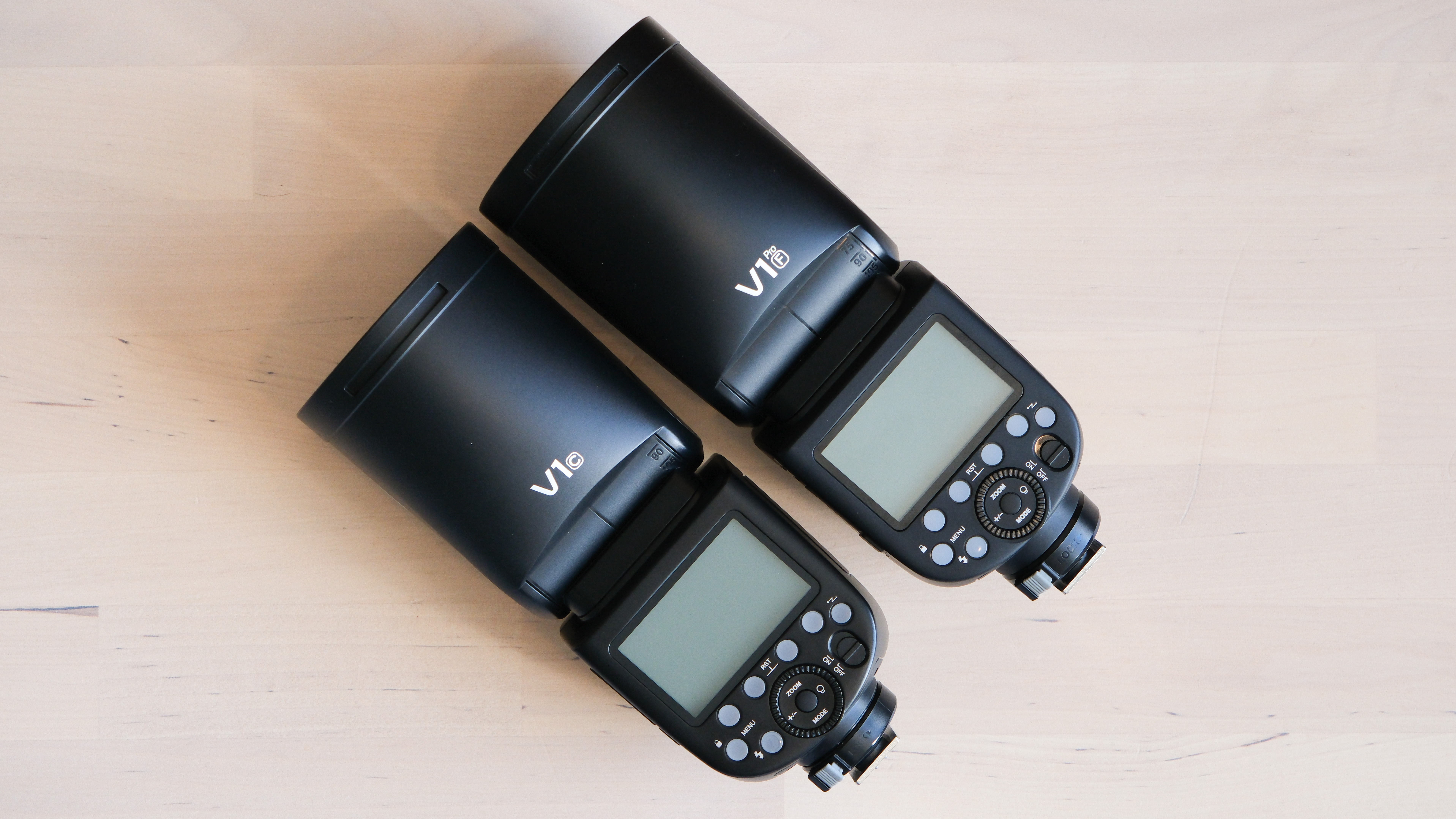
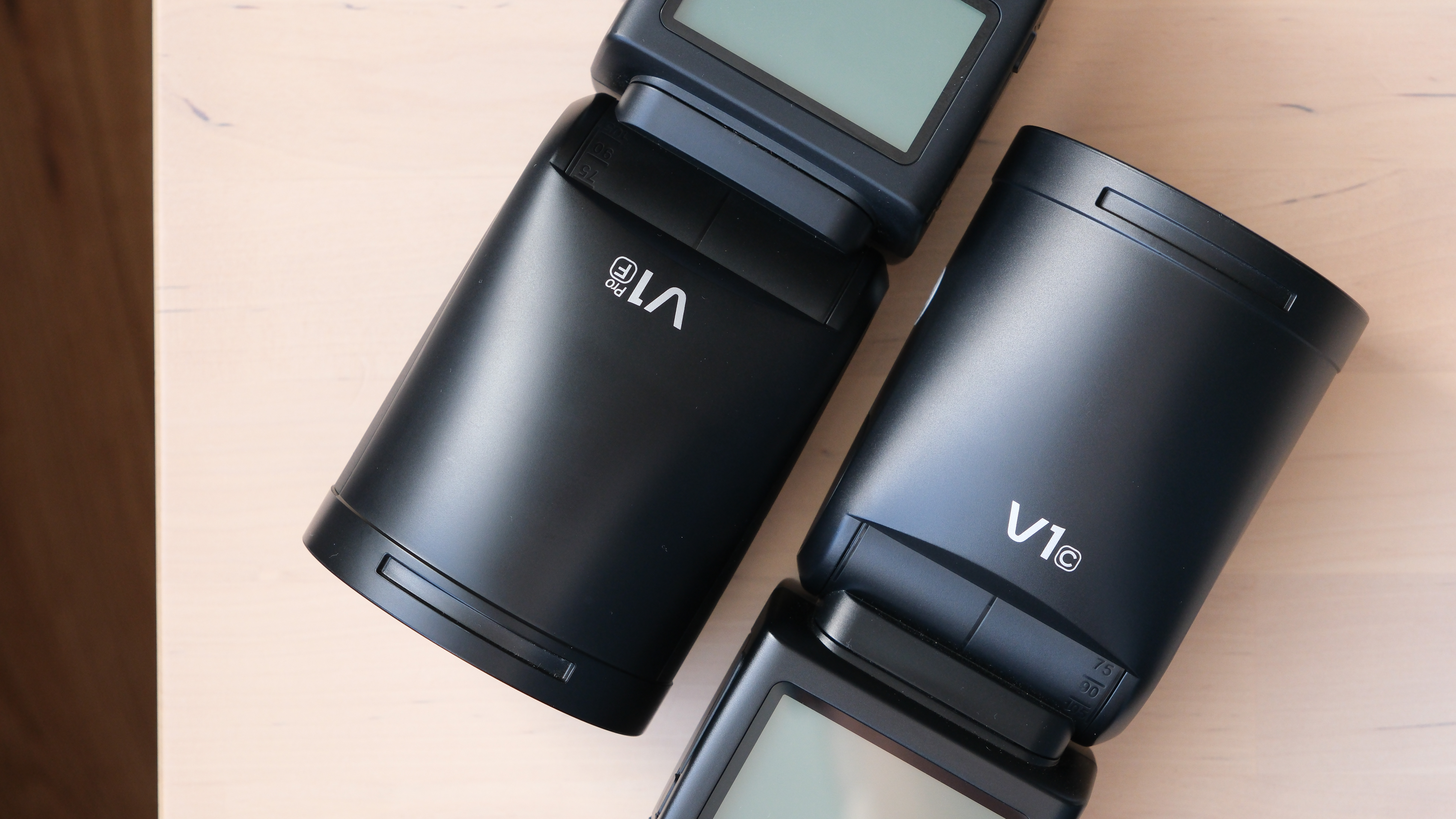
The big size isn’t really the fault of the V1Pro, as the amount of light produced as well as cooling is mostly down to physics, with a bigger head producing a more powerful flash. However if you are shooting a wedding or event where you will be carrying this around for long periods, it is a very awkward thing to hold on many cameras.
The V1Pro is mostly very well built although it doesn’t quite have the fit and finish of its much more premium Profoto or camera brand rivals. The body itself is a generic but solid-feeling plastic construction that can take a knock or two, the buttons are better, but the rear dial still continues to be loose fitting and flimsy feeling, although at least the wheel labels don’t spin around independently like they do on my standard V1. The locking ring works just fine but would make me feel better if it felt a little more secure as there is still a little bit of wobble.
Charging is a huge improvement with this new model. I am very reliant on everything in my kit charging via USB-C as I detest having to travel with several different charging blocks for the various brands I work with. You can quickly swap the battery on the V1Pro out like the last model, but now you can charge spare batteries by directly plugging the battery into a USB-C connection. There is an LED charging status clearly shown on the battery. This is one of the simplest solutions I have come across for charging spare batteries and I really hope to see this more.
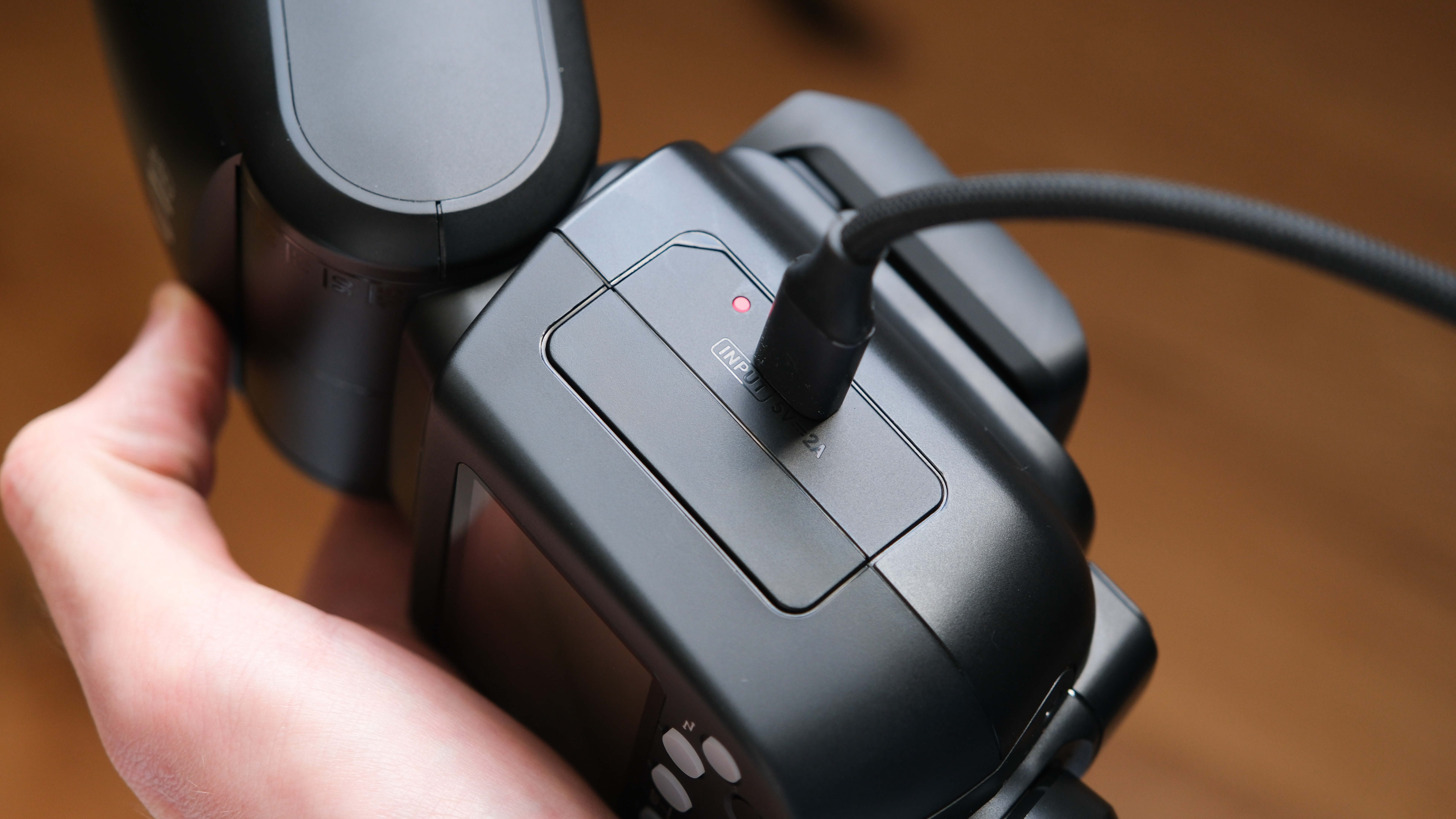
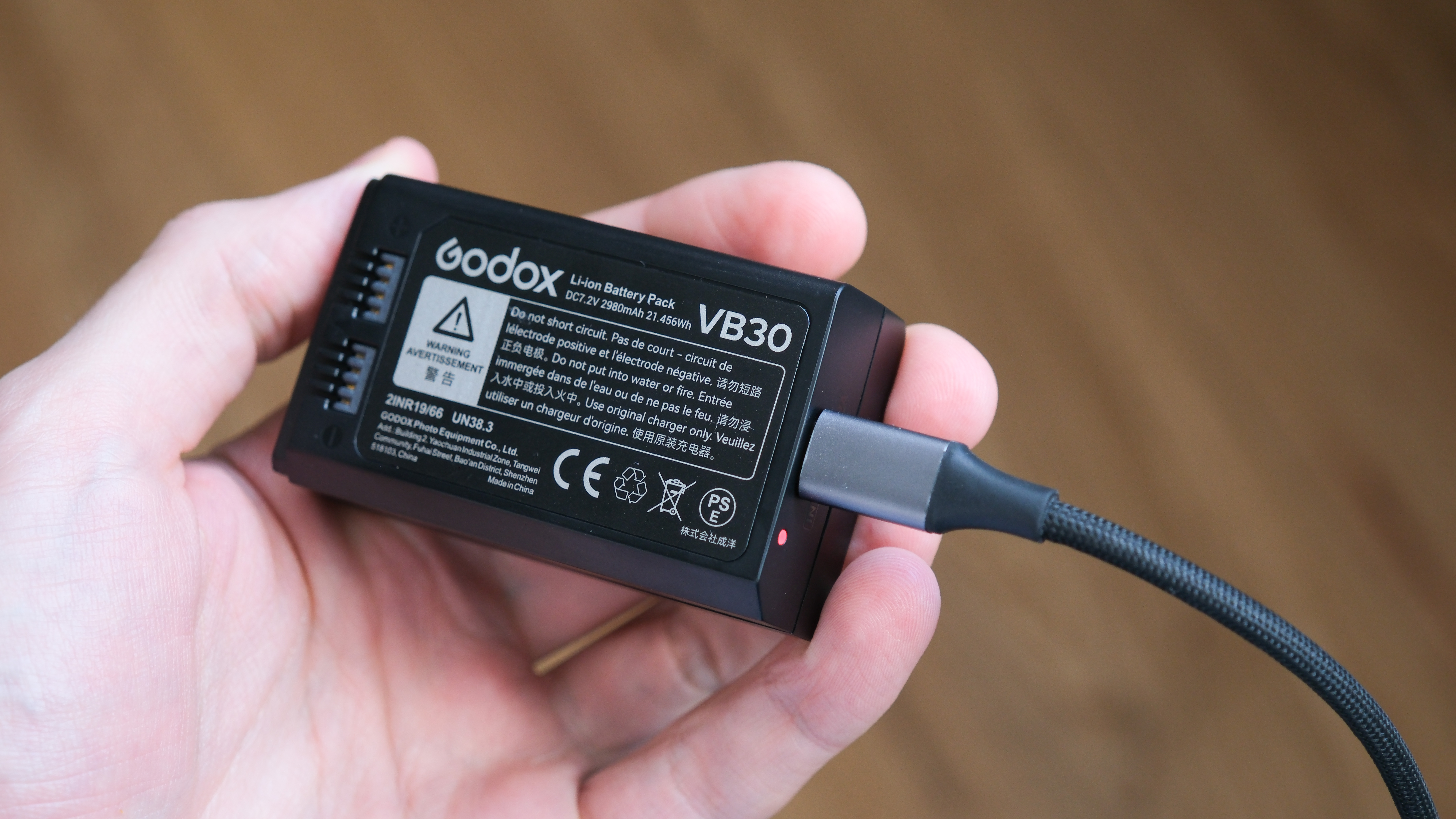
The control system for the V1Pro is fairly straightforward if you know what you are doing when it comes to flash photography as it follows much of the same controls and terminology as used across the industry in other flash units. Godox is falling behind a little on UI design though, with the UI on other flashes being much nicer and simpler to use, as well as brands adding more phone companion app connectivity and controls.
Flicking between TTL and Manual is now easier than ever with a switch on the side, this acts as more of a shortcut than a permanent mode lock, as you can still switch modes on the rear dial as well, which I appreciated a lot as that is my muscle memory for switching modes. The most common settings I needed for manual flash, like flash compensation or zoom, can be easily dialed in on the rear wheel, with the dial being clicky and precise enough for incremental changes, but can be spun fast to speed through the entire flash power range.
However, if you are a total novice then there isn’t much assistance in the menus to decipher what something like TTL or S1 might mean, so it is a bit of a learning curve to get to grips with what you need for creative uses. You can just point the V1 forward in TTL and Auto Zoom and it will do the work for you, but frankly, there are smaller, cheaper, and easier flashes to use for that.
The new fill flash clips into the front in a fairly straightforward manner, although the slide-in technique took me a few attempts at first. The fill flash is very slim and doesn't really get in the way. I didn't really notice it when it was attached, so it would be possible to just leave it on full-time and toggle the power on an off in the menus, which would save taking it off and losing it. There is a small slot to keep the fill flash in the supplied case though, which should hopefully help prevent that.

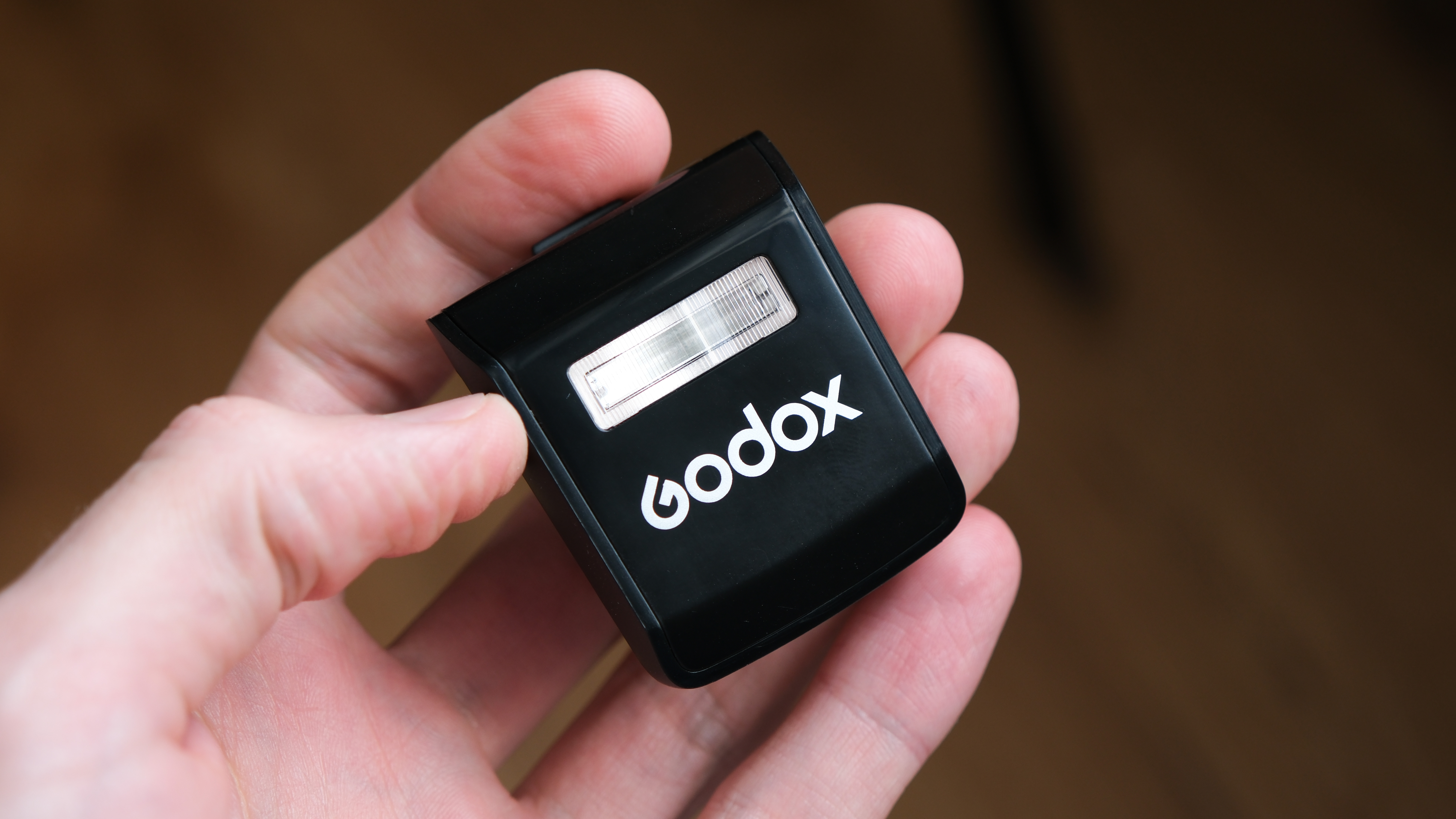
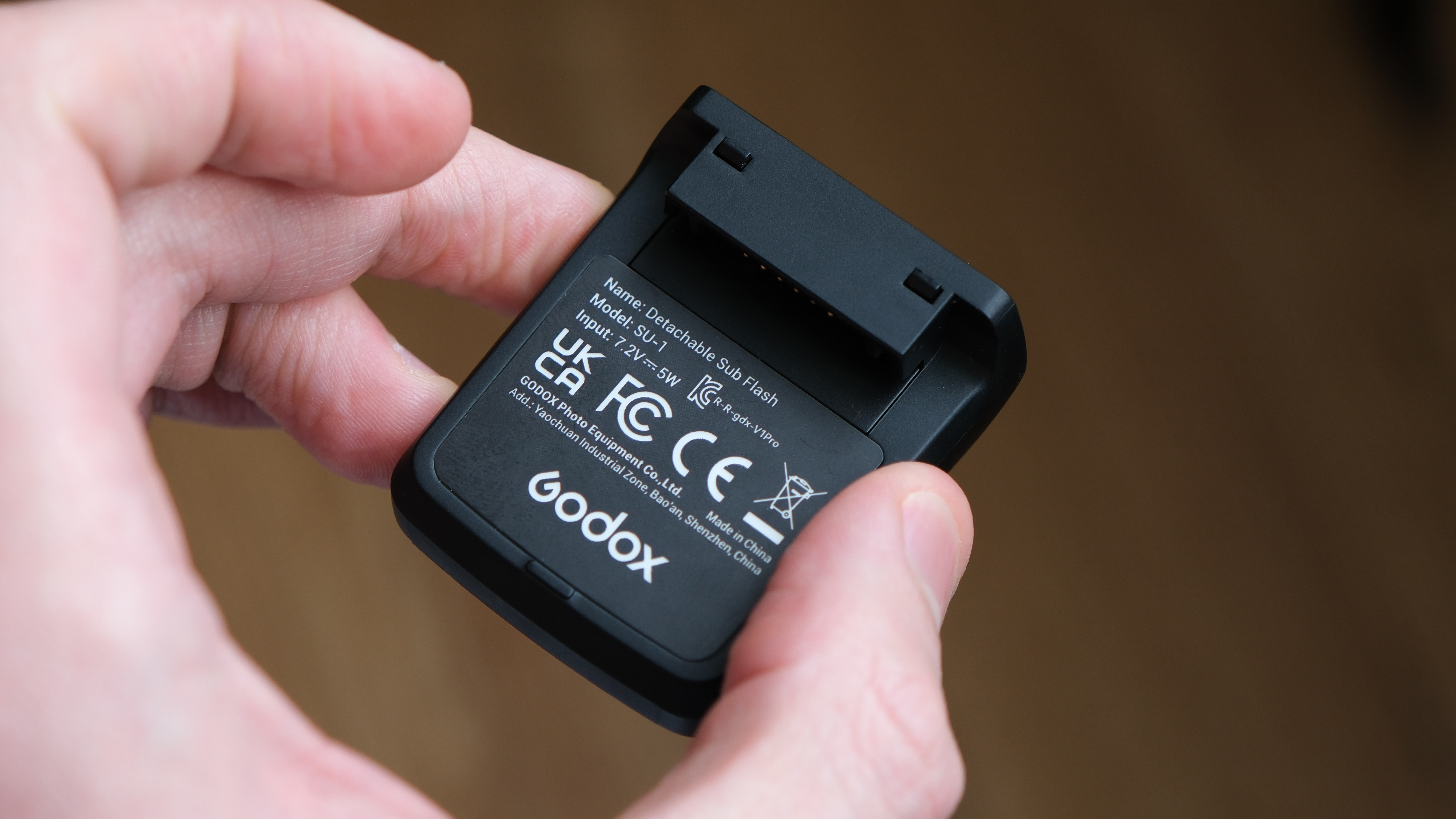
Godox V1Pro: Performance
I am already a big fan of the Godox V1, and the Godox V1Pro does everything that light does, and then some. The biggest difference in performance from the main flash head is the rate it can fire at full power. Godox claims that the flash can fire off one hundred full power shots in succession, and while tedious, I did manage to fire 100 shots at 1/1 power. However, don’t expect full power flash to meet your camera’s high-speed shooting mode, there is still a 1.5-second delay between each shot, but now the flash can go for longer without needing a break.
I have covered a lot of weddings and events, but I don’t think I have ever come across a situation where I am shooting a photo every 1.5 seconds for over 100 shots, which is two and a half minutes of non-stop shooting, so I am not entirely sure how useful this is. However, if you do demand the most from your flash, and you find you regularly overheat your model, then this might be a lifesaver.
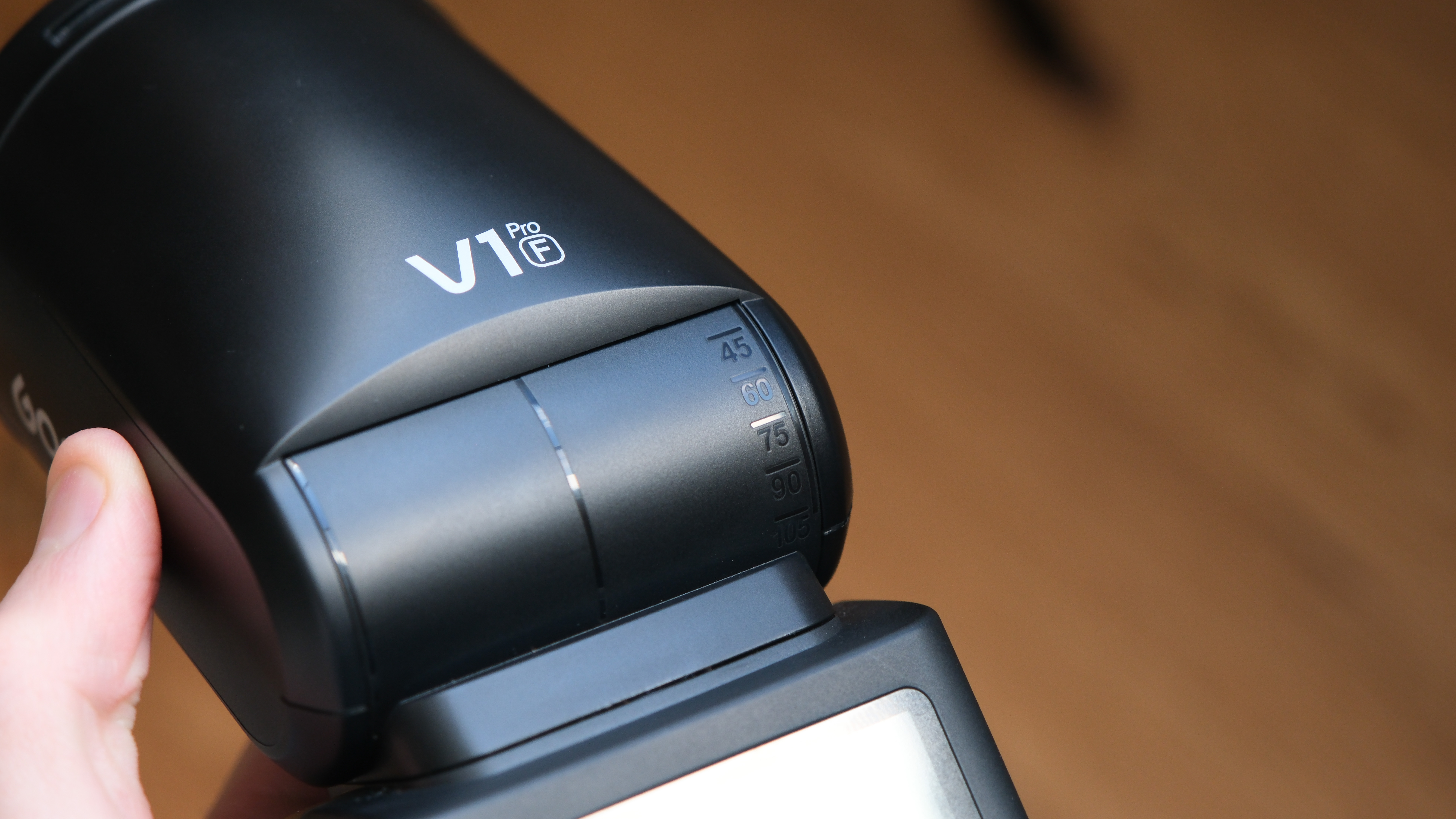
Battery life is excellent, and meets Godox’s target of around 500 full-power shots, although I was rarely if ever actually shooting consistently at full power, and at my much lower flash outputs the battery just kept going and going. I’d still buy an extra battery or two for my kit bag for shooting weddings or events as it would be a professional disaster to run out of power, but I would be pretty confident I wouldn’t need them.
The modeling light on the light is fine, but it really is only enough for the camera to lock autofocus, this is certainly no hybrid light for photos and video.
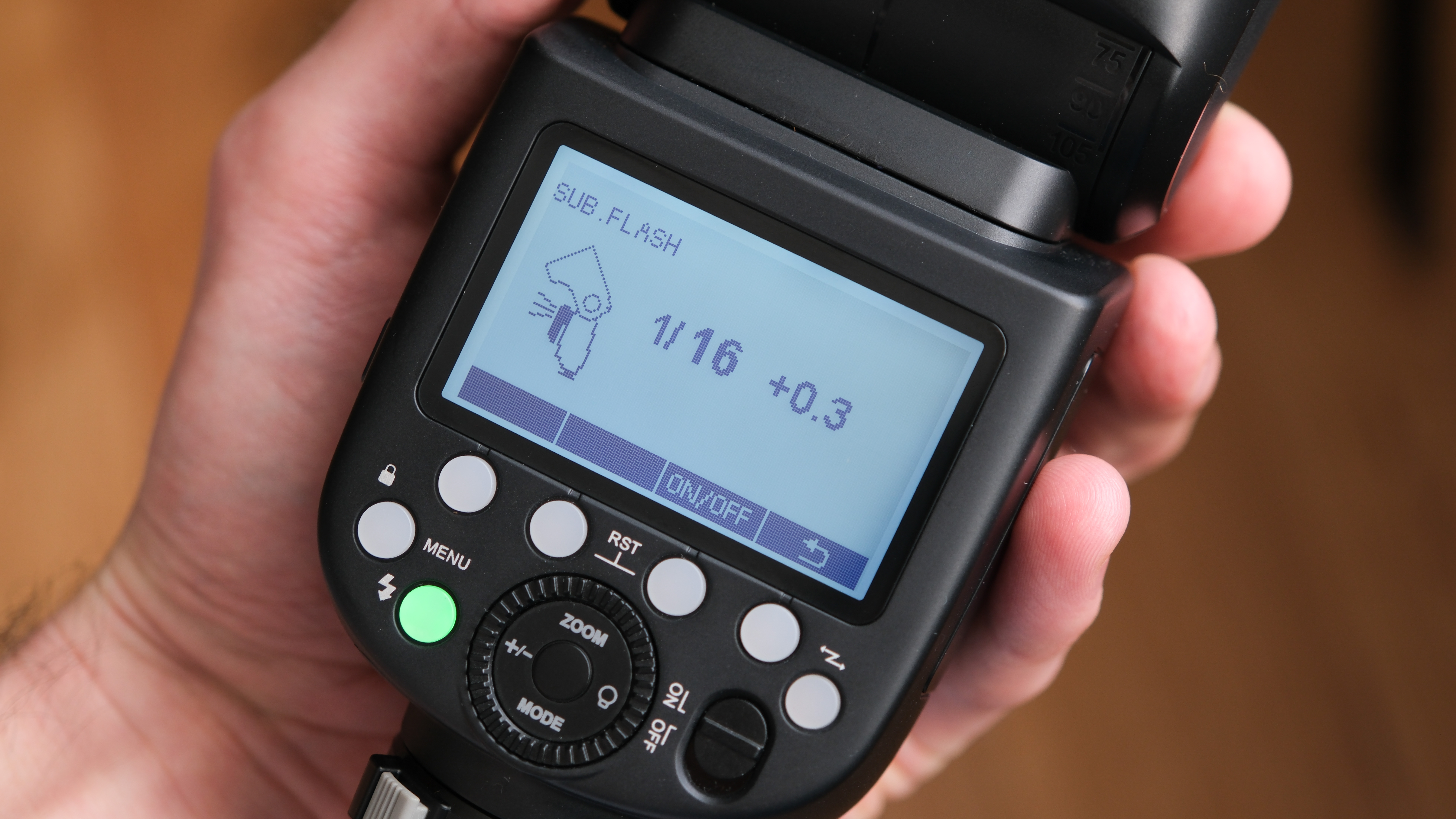
Now the other big feature is the fill flash accessory. If the clip-on fill flash is desirable to you as a photographer will very much depend on your style, if you love the look of flash, then it might complement your shooting, but for my work, I don’t really find it that useful. The issue for me is if I am inside, I will be bouncing the light from the main head back off a wall or ceiling trying to create the illusion of a more natural source of light behind or above me, which the clip-on fill flash kind of shatters with its obvious direct light on my subjects.
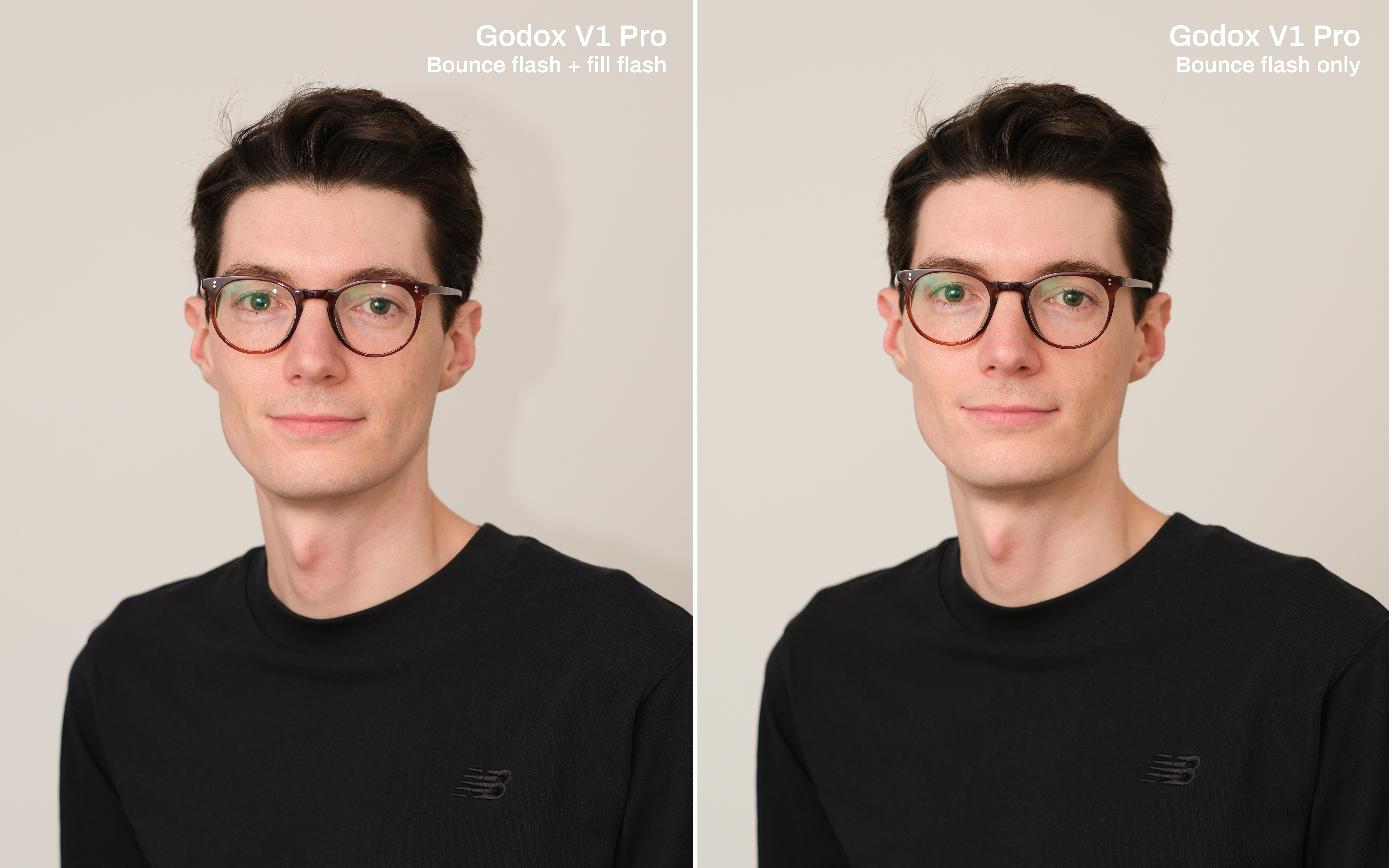
I can only really see it being useful as a fill flash when you are in a situation where you want to counter the bounce back of light from creating unwanted shadowing. Although all my photography instincts would be telling me to just move my subject or use an angled reflector instead below the subject for a more natural finish, although I appreciate sometimes that isn’t possible. However, as the fill flash still gives the look of ‘flash photography’, if I am in a situation where I must light a subject directly, then I can just use the main flash head directly at my subject on low power for a similar effect.
Last but not least, Godox’s wireless system is simple yet fantastic. I have used Godox’s flashes for years, and the wireless has always been consistent and reliable, and the V1Pro slots right in with no issues amongst my other flashes like the AD300 or older V1. The V1Pro can act as a master unit for a multi-light setup or can become an off-camera flash when used with a trigger like the new Godox X3, which adds some value to the light as it is more versatile than just an on-camera flash.
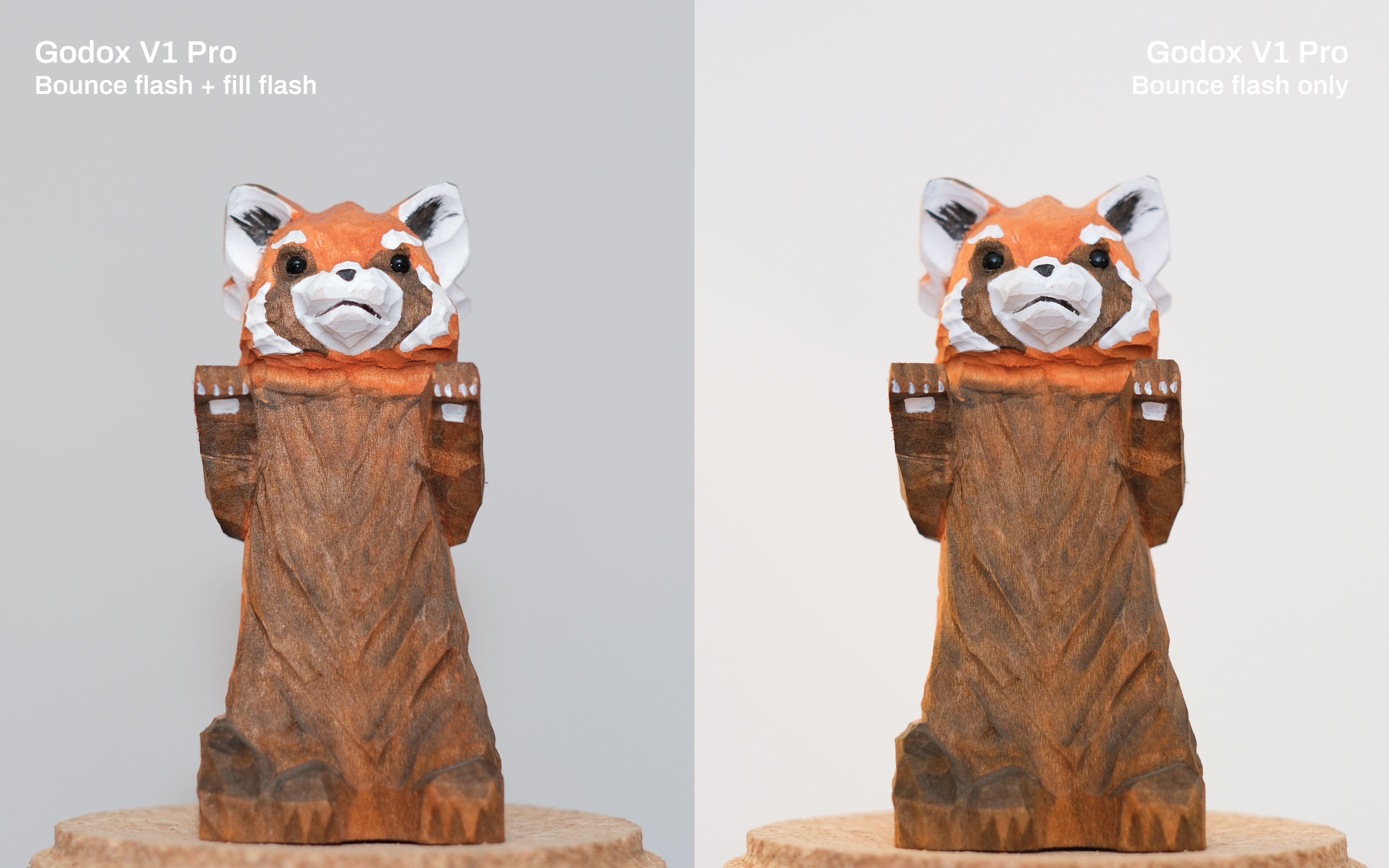
Godox V1Pro: Verdict
The Godox V1Pro builds on the success of the V1 and adds some neat new features, but this comes at a higher cost, and if this extra money is worth paying very much depends on your photographic style.
Although the new USB-C battery charging has me very tempted, there are not enough valuable features in the Pro for me to get excited about paying around a third more than the regular V1. The big feature of the clip-on fill light I found to be more of a gimmick than actually useful, as the light didn’t add anything to my work, instead my photos had a bit more of a cheap ‘flash photography’ look like you might get from a disposable camera with a built-in flash, which I did not like. The other headline grabber of 100 continuous shots at full power is also amazing, but won’t get much use from me, as that is just too many photos, although other pros might find this more useful.
However, this doesn’t take away from what an amazing flash this is, the consistency of the flash is excellent, the power is more than enough for portrait, event, and wedding work, and Godox’s wireless system is fantastic. But then the standard V1 has all these features too and is more than good enough for my needs.
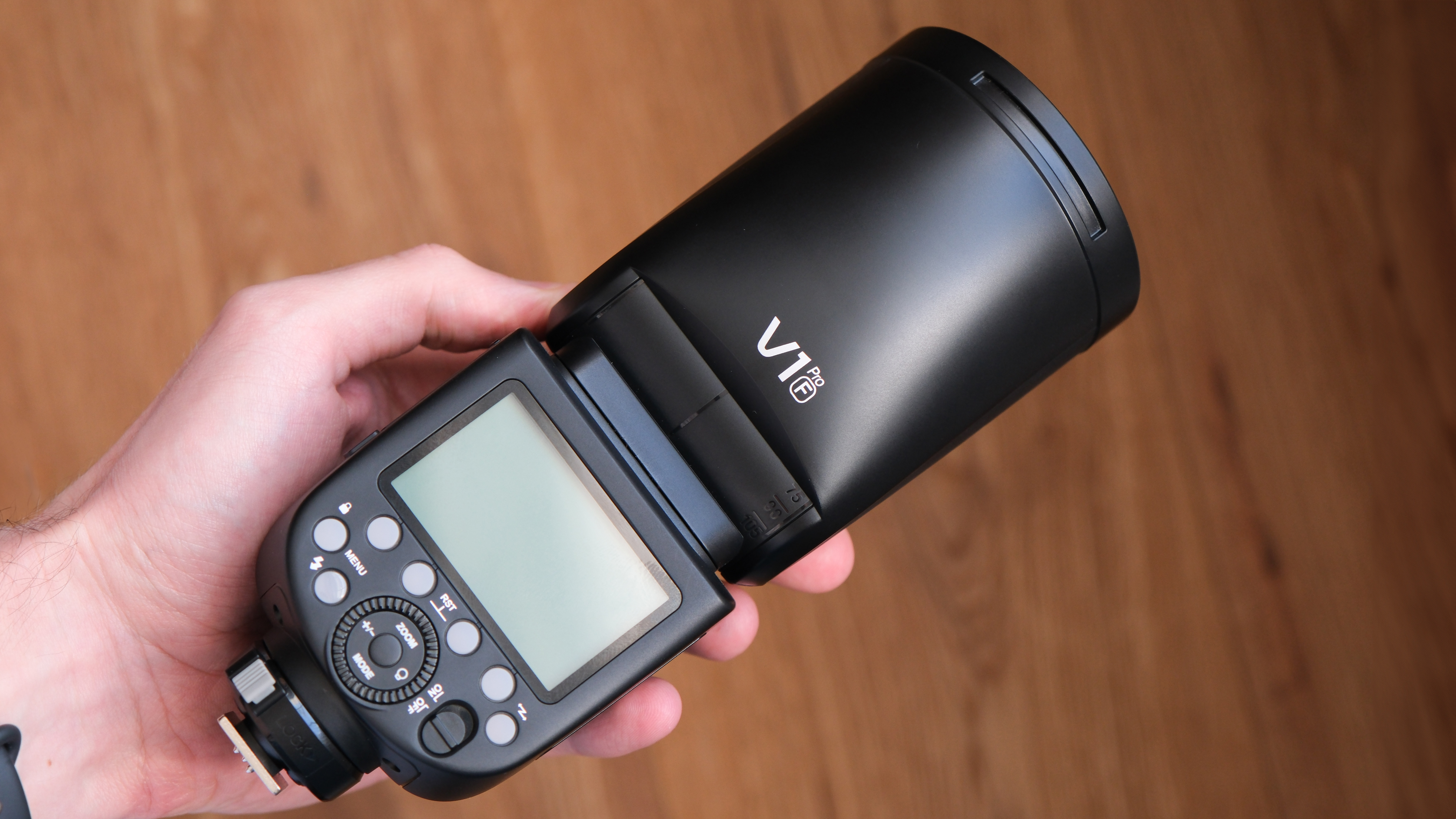
✅ Buy this if...
- If you want a professional on-camera flash without paying professional prices then look no further as the V1Pro offers great performance to price.
- If you want an easy way to elevate your low-light portrait, wedding, or event work to a professional standard then this is one of the best on-camera flashes to add some pop.
🚫 Don't buy this if...
- If you are looking for a flash to light up a big area then this 72W flash won’t have the power, look for a 300W+ off-camera flash for big spaces.
- The new features are cool, but if you won’t use them then it is not worth paying the premium over the excellent and very similar standard Godox V1.







